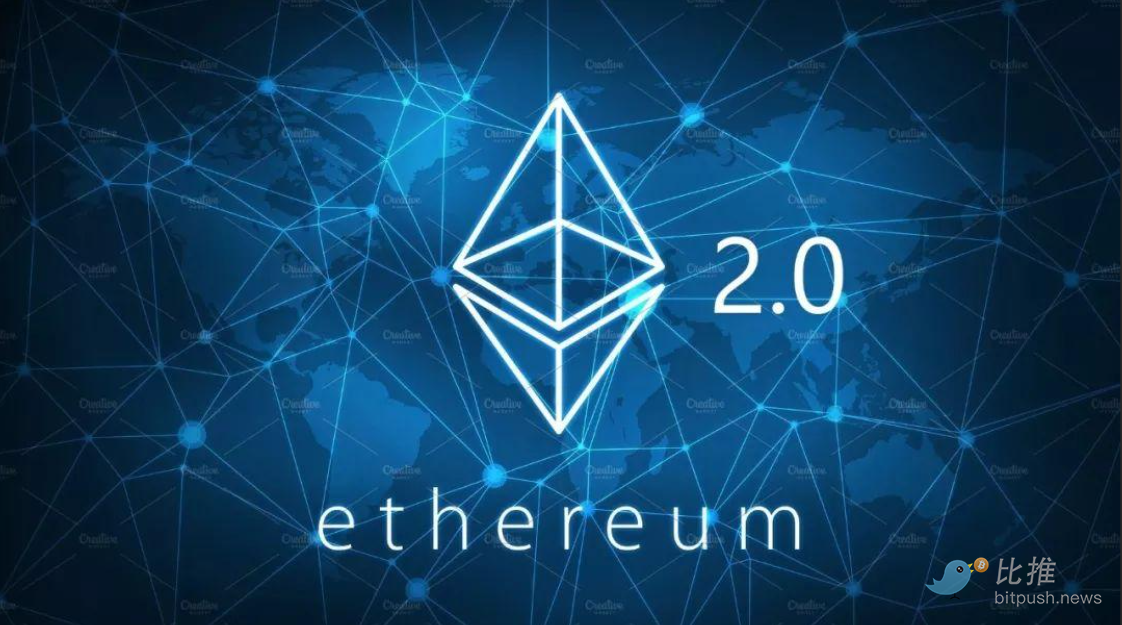In the first half of the year, it lagged behind BTC. What kind of “danger” and “opportunity” will ETH face in the second half of the year?
How will ETH perform in the second half of the year after lagging behind BTC in the first half? What risks and opportunities lie ahead?Original Article: “Why is BTC’s performance stronger than ETH in the first half of the year? What kind of “crisis” and “opportunity” will Ethereum face? Author: BlockingBitpushNews Asher Zhang. As of July 4, 2023, ETH has accumulated an increase of 63% since the beginning of this year, while BTC has accumulated an increase of about 87.1%. After switching to the PoS mechanism, Ethereum’s performance is slightly weaker than BTC, which is different from the expectations of many people at the beginning of the year. Why is this? After the US SEC strictly regulates the cryptocurrency market, some subtle changes are happening in the market. PoS-type tokens seem to be facing a crisis. What impact will this have on Ethereum? As a leader in the blockchain 2.0, what kind of “crisis” and “opportunities” does Shanghai-upgraded Ethereum face? How will Ethereum’s future market develop?

After Shanghai Upgrade, is Ethereum facing selling pressure?
After the Ethereum Shanghai upgrade, ETH is open for withdrawal. Does this mean that Ethereum is subject to selling pressure? According to Oklink data, as of June 29, the current staking rate of Ethereum is 21.15%. From the trend, the overall staking rate of Ethereum has shown an upward trend after completing the Shanghai upgrade. This means that after Ethereum opens for withdrawal, the new staking amount of ETH exceeds the withdrawal amount. Instead of forming selling pressure on Ethereum, this further reduces the circulation rate of ETH, which will be a long-term positive for Ethereum in the future.
In addition, after the implementation of EIP-1599, Oklink data shows that as of July 4, 2023, the cumulative amount of Ethereum destroyed has reached 3429221.74. This will further promote Ethereum towards deflation. It is worth noting that the destruction mechanism of Ethereum may seem relatively limited in promoting the market during the bear market period, but when the bull market or new prosperity of the ecology appears (similar to “DeFi Summer”), Ethereum’s price performance is expected to become particularly strong, and the cumulative destruction effect of Ethereum will be further highlighted.
- Foresight Ventures: The Best Attempt at a Decentralized AI Marketplace
- 2023 Financing Semi-Annual Report: Primary Market Sluggish, Infrastructure and Tools Leading the Way
- Tether CTO: AI will choose Bitcoin over centralized cryptocurrencies
Will the transition to PoS mechanism affect ETH, as the SEC’s regulatory attitude changes?
In the recent cryptocurrency market, the US SEC still has a greater impact. Although the SEC did not sue Ethereum this time, has the SEC really given up its regulatory power over Ethereum?
After Ethereum switched from PoW to PoS, the regulatory attitude of the United States SEC has undergone a clear change. In a speech on June 14, 2018, former chief of the SEC’s Division of Corporation Finance, Hinman, said, “Apart from the fundraising that came with the birth of Ethereum, based on my understanding of Ethereum, the Ethereum network, and its decentralized structure, current Ethereum quotes and sales do not constitute securities transactions,” and he believes that Ethereum’s native assets do not need to be regulated as securities. Regarding Hinman’s speech, Laura Jarsulic, a lawyer in the SEC’s Office of the General Counsel, wrote in an email on June 12, “We are hesitant to directly include statements about Ether in the speech…because it would make it difficult for the agency to take a different position on ETH in the future.” Redfearn and the Office of the General Counsel both believe that Hinman skipped the threshold issue of whether the SEC has jurisdiction, warning that by creating this “other” category and focusing on information asymmetry, Hinman may expose regulatory loopholes and the SEC may not have the power to make up for it.
If the SEC’s attitude was relatively vague before, it has become very clear this year. According to Blocking, in an interview with The New Yorker in February 2023, SEC Chairman Gary Gensler said, “Everything except Bitcoin is a security.” Although the SEC has not sued ETH as a security this time, it is not impossible in the future. Currently, the main reasons why the SEC has not taken action are likely to be: first, the SEC has not reached a consensus with the CFTC, which actually considers ETH to be a commodity, and the jurisdictional dispute is still unresolved; second, it is relatively difficult for the SEC to sue Ethereum, not only because Ethereum has a wide audience, but also because suing Ethereum would almost certainly provoke criticism from the entire crypto world, and the SEC is expected to be too busy dealing with cases involving Binance and Coinbase; furthermore, if the SEC were to take action against Ethereum, it could even lead to the main innovation force of the crypto industry moving eastward, with cities like Hong Kong and Singapore actively taking on crypto exchange businesses.
Overall, Ethereum’s short-term regulatory crisis is relatively limited, but it is not without long-term implications. In terms of recent performance in the crypto market, PoS tokens have been heavily influenced by the SEC, and many mainstream crypto assets have experienced significant declines, which means that SEC regulation has to some extent eroded investors’ confidence in crypto asset holders in the Ethereum ecosystem. By comparison, PoW tokens are once again popular in the market, as they are considered to have a much lower probability of being classified as securities, especially a group of PoW tokens that have close ties to Bitcoin. Earlier, according to Blocking, EDX Markets supported by Citadel, Fidelity and others officially announced the launch of its digital asset market, which will provide trading services for four cryptocurrencies: BTC, ETH, LTC and BCH. Smart money in the market seems to have sniffed out the opportunity for speculation, with BCH’s discussion rate on social media hitting a three-year high and its transaction volume hitting a new high for the year. In addition, a number of old-school POW public-chain tokens, such as BCH fork project eCash (formerly known as BCHA), Bitcoin SV (BSV), Litecoin (LTC), DASH, and Ethereum Classic (ETC), have also seen relatively high increases. In the market environment where the overall game is in stock, market speculation funds seem to have a tendency to shift from PoS assets to PoW assets.
Technological innovation implies the possibility of generating huge application innovations. Cheaper and more efficient transactions will directly boost the development of DeFi, NFTs, and metaverse. It will also help promote cooperation and innovation between different industries, including supply chain, Internet of Things, energy and other fields. Once the ecological applications explode, ETH is likely to truly “lead the way” under the joint effect of the Ethereum staking mechanism and destruction mechanism.

Why has ETH performed worse than BTC this year?
According to “Blocking” market data, as of July 4, 2023, ETH has accumulated an increase of 63% this year, while BTC has accumulated an increase of about 87.1%. Although we still have high hopes for Ethereum’s future performance, we have to say that ETH’s performance in the first half of the year was much weaker than Bitcoin’s, which was not as expected by many people at the beginning of the year. What is the reason behind this?
This article believes that the main reason behind this is that in the first half of the year, there were a series of innovative applications in the Bitcoin ecosystem, while compared to Ethereum, the Ethereum ecosystem was actually lackluster. At the beginning of this year, the Bitcoin ecosystem had two innovative applications, which became the core driving force for pushing Bitcoin up. One is the Ordinals Bitcoin NFT protocol, which promoted native NFTs on Bitcoin to go viral in a very short time; as a result, it also attracted a group of Ethereum NFT protocols to migrate to the Bitcoin network. The strongest IP creator in the NFT field, Yuga Labs, also launched the TwelveFold NFT series on the Bitcoin blockchain based on the Ordinal protocol.
The other is the Nostr protocol. On February 1, 2023, Twitter founder Jack Dorsey announced the launch of the Damus application based on Nostr, where users can post content, send private messages, conduct Lightning Network payments, etc. on Damus Square. As of February 5, 2023, the public key count had reached 500,000+; in addition, Nostr’s ecology also includes communication tools Anigma, text sharing tool Sendtr, and offline chess mini-games Jeste, etc.
Then on March 8, 2023, crypto community user @domodat borrowed from the Ethereum ERC-20 token standard to create a standard for experimenting with homogenized tokens on Bitcoin using the inscription function. Although it currently only has three functions: deployment, casting, and transfer, it has ignited the Meme token and even caused congestion in the Bitcoin network. Since then, BRC-21 and other protocols have been proposed successively, and with the blessing of Bitcoin Layer2 ecological construction, DeFi and other applications have also begun to appear in large numbers in the Bitcoin ecosystem.
Looking at the Ethereum network, although the Shanghai upgrade is very important, its core is only to allow ETH to be relatively freely withdrawn, although it has driven the staking track, it is not actually a core technological breakthrough, and the congestion problem that restricts the development of Ethereum has not been solved in essence, making it difficult to turn technology into productivity, thereby promoting breakthroughs and outbreaks in ecological applications, and it is also difficult to increase the intrinsic value of Ethereum, which will result in a weaker performance than BTC in terms of price.
As we mentioned earlier, the Dencun upgrade is essentially an important upgrade that can turn technology into productivity. From the timeline, Ethereum’s core developers expect the Dencun upgrade to go live at the end of 2023, while Bitcoin will enter the halving period in April or May next year, and market sentiment will gradually recover. In addition, the Fed’s policy may shift next year, so Ethereum is likely to strengthen before the Dencun upgrade at the end of next year and enjoy a good trend stimulated by the Layer2 track outbreak.
We will continue to update Blocking; if you have any questions or suggestions, please contact us!
Was this article helpful?
93 out of 132 found this helpful
Related articles
- Hong Kong has too many smart people, there are no more “leeks” in the currency circle.
- NFT’s Darkest Hour: Can These 24 Positive Developments Boost the Market?
- Azuki “Bringing Collapse” NFT Market, taking stock of bad debt caused by NFT lending protocols.
- An Explanation of Bitcoin L2 Stacks: Creating Smart Contracts on Bitcoin
- BlackRock resubmits Bitcoin spot ETF application, designates Coinbase as monitoring partner
- Bitcoin sees a positive start in July, will it reach $40,000 soon?
- Bitcoin welcomes a good start in July, and analysts optimistically predict that it is “inevitable” for it to reach $40,000.




